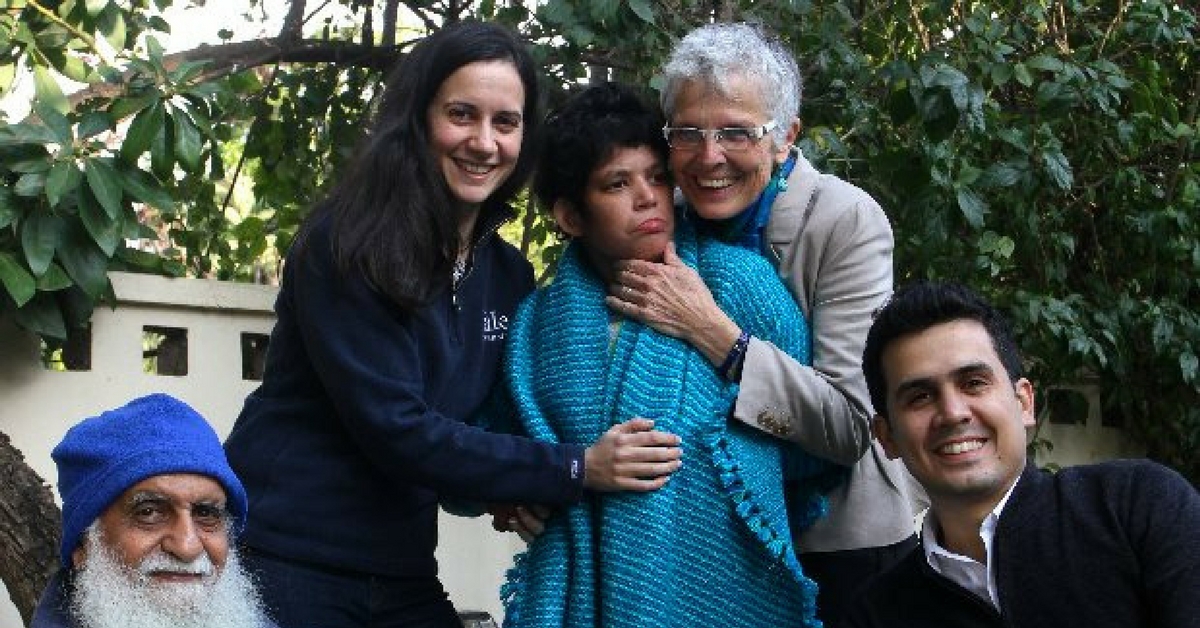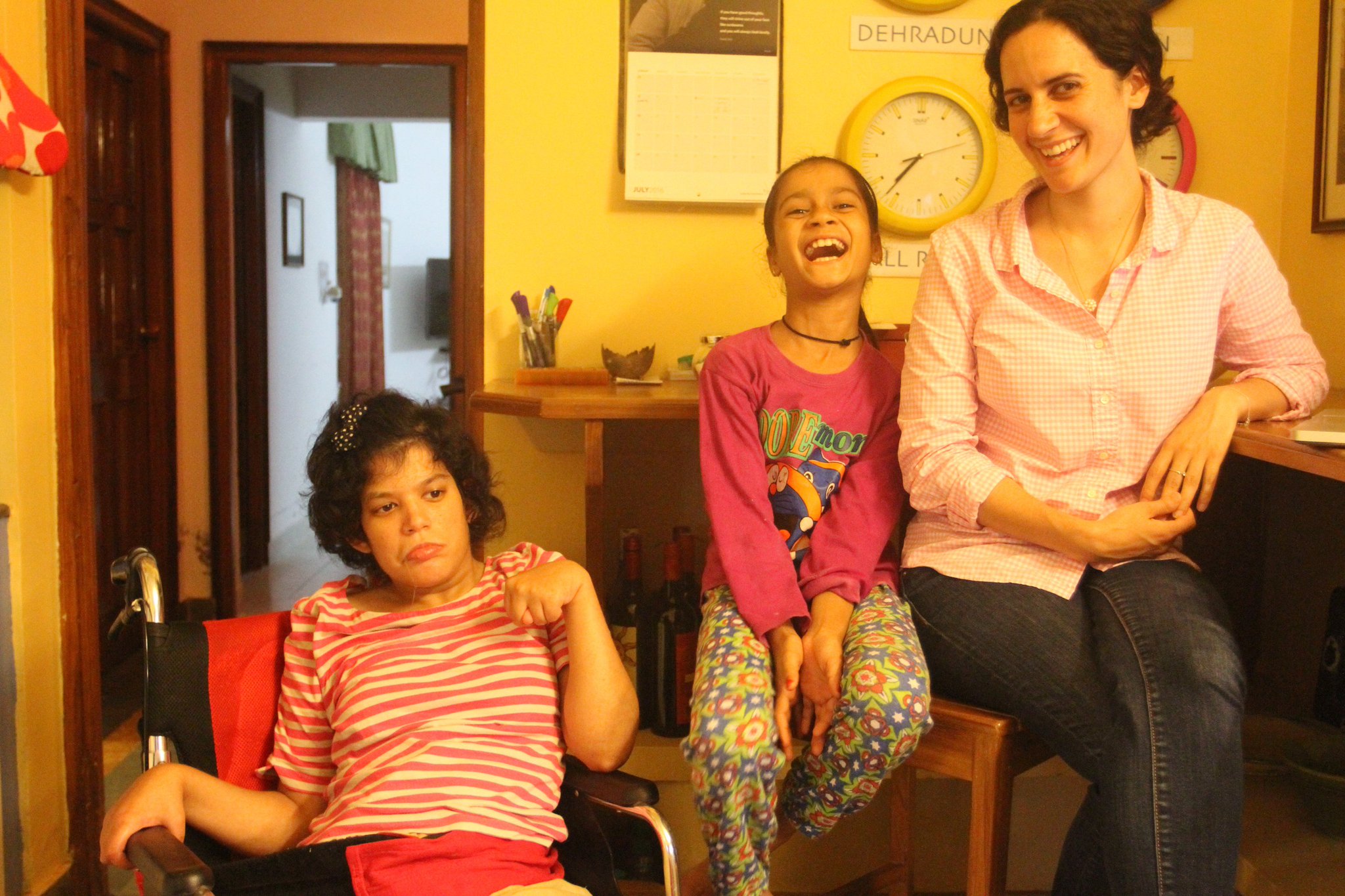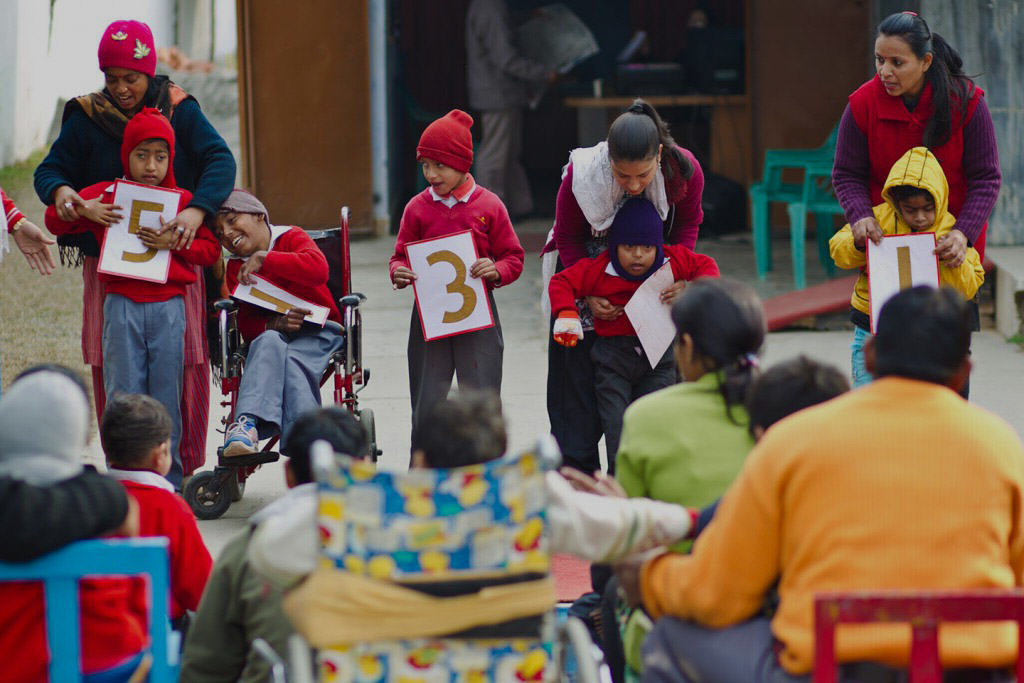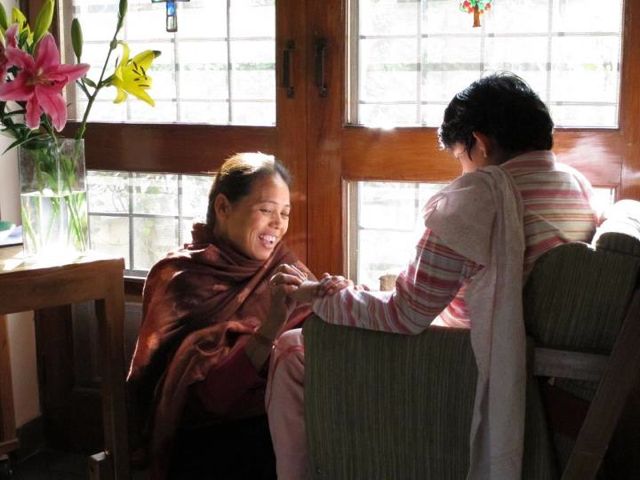Thanks to Moy-Moy, There’s Hope for Thousands of Handicapped Children
27-year-old Uma Moy Moy Chopra suffers from cerebral palsy. But a loving family and their never-say-die attitude have helped her find love, and changed the lives of thousands of other affected children.

Young Uma Moy Moy Chopra’s stars changed almost as soon as she came into this world. Born as the 13th child to the wife of a potato farmer in Uttarakhand, Moy Moy’s birth itself happened by sheer chance. The farmer’s wife had made up her mind to abort the child (she had conceived despite sterilisation), but the doctor she went to said she had a family who was willing to adopt her baby in a private adoption.
The 13th child of a mother who’d given birth 12 times previously, born on the side of a road, 12 weeks premature, one kilo at birth – Jo Chopra, the adoptive mother and an American by birth, knew the dice was loaded against the baby girl she was planning to adopt, but she decided to go ahead nonetheless. Jo had two natural children of her own, but laws and adoption agencies at the time in India were unwilling to allow a couple with a boy and a girl to adopt a third child. “The family was perceived as complete. So we couldn’t adopt a third child through the agencies,” says Jo.
So when the baby came her way, she didn’t blink an eyelid.
Her husband was not in favour of the adoption initially, as he felt it wasn’t the right time for them to have a third child. But Jo was determined.

For the first few years of her life with the Chopras, Moy Moy seemed fine. A trifle slower than other kids, she could nonetheless speak (both in English and Hindi), eat, was toilet-trained, and had a pretty “sophisticated” sense of humour for a 4-year-old. She was a “delightful little girl full of tricks”. Call it fate or the little girl’s good fortune, but her adoptive family embraced her with intense love and longing.
Of course, at the time, Jo couldn’t foresee what the future held for her and her adopted baby. “I thought then that she would be able to lead a normal life – go to school, get a job in a flower shop, or something simple like that. I knew she wasn’t going to be an academic, but she was so able, funny, and engaging that I felt things would be fine”.
It was when Moy Moy turned 6 years old that she slowly started to regress. The whole family witnessed her regression in total shock and pain.
Her son Anand (now 33) and daughter Cathleen (now 30) were by then fiercely attached to their Moy Moy – “little sister” in Cantonese.

“It was like watching an elderly person with Alzheimer’s. She started to get seizures, forget things, she wasn’t getting her sentences right, she became ungainly, started to trip and fall.” She was no longer reliably toilet-trained, eating became a challenge, and soon the little girl lost the words that previously tumbled so happily out of her mouth. “She was speaking in full sentences, then some words, then some sounds, and now…” says Jo.
Now 27, Moy-Moy is sitting next to us at the couple’s house in Dehradun’s VasantVihar Enclave in a wheelchair, her head slightly tilted. She is silent. Her eyes are unblinking. My impression is that she is trying to say something, but her body fails her.
After she turned 6, the child went through a steep decline over 10 years or so. At 16, a tube had to be inserted to allow her to eat. The family went through a harrowing few years. Moy Moy’s disabilities did not allow them to do any of the normal things that families do together.
“Travelling was hard. With Moy Moy, everything had to always be accessible, and nothing is accessible in India when it comes to people with disabilities, as you know,” says Jo.
If Jo Chopra had not been a picture of tranquility, I would probably have burst into tears. Never have I felt so humbled at someone’s ability to take what many would feel is a tragedy beyond belief with such dignified composure.
“Why didn’t you produce a third child instead?” I ask. The enormity of what Jo is having to deal with is yet to sink in, and makes me question why she didn’t simply follow her own mother’s footsteps : Jo is one of seven children. But I learn that her mother too adopted one of those seven (a girl), whose name is Moy Moy. Jo’s Moy Moy is in fact named after her aunt. Jo already had two “homemade” children – she was quite clear she wanted to adopt.
Jo in fact wonders how her life would have progressed if Moy Moy had been like a regular child.
It would have been easier for the family, and of course for Moy Moy, but a number of other children and parents may in fact have lost out a lot.

Moy Moy’s misfortune has in fact become the good fortune of thousands of handicapped children. Thanks to Moy Moy, Jo started KarunaVihar Special School in 1995 – a school for children with disabilities. “We had planned to have just the school and the creativity center – which is a fun place for kids to learn and play – but the need was just so enormous.” One thing led to another, and now Jo has a “mini-empire” she runs. She is grateful to Moy-Moy for giving her a purpose and something to live for. The girl has helped Jo find her “calling” in life.
Besides the special school, there is Latika Roy Foundation, the child development centre, and the centre for vocational training. There are seven centres all over the city. There are waiting lists at every center. There’s a centre at the Doon hospital, where they do diagnostics and assessments. With a staff of 115 (all salaried), they do training, awareness, outreach, and advocacy. Her staff, she says, is a “remarkable” group of people, and they are the backbone of the foundation today – a lot she feels privileged to work with.
The foundation works with 300 children with special needs on a daily basis. The school looks after the children who are more able academically, who can learn to read and write and have less severe disabilities. “Many of our kids can manage independently with a bit of help, can hold down a job, and maybe even get married” – something Moy Moy can never hope to do. Children with more severe disabilities are managed at the child development centre.
“We start with newborns, and the earlier we start, the more we can achieve with the children,” she explains.

At the Doon hospital – where they do OPD and infant monitoring – the Foundation’s doctors and trained specialists work with and treat close to 2,000 children every year. Regular follow-ups are done for these children who live in the region, but mostly not in the city.
Jo’s own life has changed completely. She travels all over the country to speak and raise awareness and money, and gives TED talks while keeping home and hearth together. Raising money is something she has been doing herself. She writes proposals, meets corporates, and speaks at any forum where she may be heard.
Yet at no stage during our hour-and-half long chat do I find her overwhelmed by the enormity of the task before her. “The organization has added so much work for me, yet it is them who make it possible. Many of my staff – who have got jobs because of Moy Moy – are devoted to her. If I am travelling, 10 people will be willing to come and look after her in my absence.” But as far as possible, the couple doesn’t travel at the same time. One of them is always there to look after Moy Moy.
“She has a circle of love and protection around her, thanks to our people,” says Jo, her eyes shining with happiness at this.

How is this whole enterprise financed, I ask. It does require quite an effort, but when intentions seem genuine, Jo feels, there are enough people with a heart. Some years ago, Thermax’s Anu Aga saw a TED talk given by Jo, made the effort of coming to Dehradun to see the whole project, and left Jo with a cheque of ₹1 crore!
Although the chuck of the money comes in through grants from trusts (The Ratan Tata trust is one of the major ones), they have been getting money now from the government, corporates, and private donations. Fees are charged on a sliding scale, so no child is refused if the family can’t afford it, but if a family can afford it, fees are charged based on income documents submitted. The highest fee charged by the foundation is ₹1,400 a month.
Disability itself has changed dramatically in India, according to Jo. When Moy Moy’s problems began, they couldn’t find therapists, specialists, or anyone. In fact, there was no clear diagnosis for a long time. Despite taking her to Hinduja Hospital in Mumbai, no one could clearly identify what was wrong with the child.
Finally the couple took Moy Moy to the US for the final verdict – cerebral palsy.

Now in India, Jo says, things have improved. It may be a far cry from what is needed, but fully-trained specialists can now be found in India. The specialists can in turn train more people. Initially, even to manage the centre and special school, Jo had to get specialists from the UK to help train their therapists.
I am like a stuck record, and still reeling under the shock of how much her life has had to change, and how much of herself is dedicated to Moy Moy, a child she adopted. “You only adopted a child. You didn’t bargain for all this,” I say, a bit embarrassed at how insensitive I sound even to myself.
She laughs. There are no guarantees in life, she says. You can give birth to a child, and you don’t know for certain everything will be hunky-dory. She says this was perhaps easier in a way since she did have some inkling that things could go wrong with Moy Moy.
Perhaps she under-anticipated the extent of it, but it wasn’t as if she wasn’t aware that there is a possibility.

Jo also feels that she would never have been able to do all this in America. A college drop-out, she says she would never get to meet and work with or experience all that she has thanks to Moy Moy. In some ways, she says it was all meant to be. “I chose Dehradun, Moy Moy’s mother was persuaded not to abort her, we found Moy…Can it be that destiny did not play a role in all of this?” she asks. Even how she met her husband – Ravi Chopra, the reason she finds herself in India to start with – is destiny, and a separate story I shall refrain from telling in the interest of brevity.
I ask whether the birth mother or father have been in touch since the adoption, and do they know how things turned out for their daughter. Jo – who is fluent in Hindi – says that Moy Moy’s birth father had actually never wanted to give her up, and he felt they could have taken care of her, in addition to their 12 children. He came across Jo and Moy Moy some years ago when Moy Moy had stopped speaking but was still walking with support. He could see the regression, but just nodded his head and said in Hindi, “You must owe her something.” Uma, their daughter of the mountains.
Adapted from an article originally published on Business Standard. For more information, and to help children like Moy Moy, contribute to the Latika Roy Foundation.
Like this story? Or have something to share? Write to us: [email protected], or connect with us on Facebook and Twitter.
NEW: Click here to get positive news on WhatsApp!
If you found our stories insightful, informative, or even just enjoyable, we invite you to consider making a voluntary payment to support the work we do at The Better India. Your contribution helps us continue producing quality content that educates, inspires, and drives positive change.
Choose one of the payment options below for your contribution-
By paying for the stories you value, you directly contribute to sustaining our efforts focused on making a difference in the world. Together, let’s ensure that impactful stories continue to be told and shared, enriching lives and communities alike.
Thank you for your support. Here are some frequently asked questions you might find helpful to know why you are contributing?


This story made me
-
97
-
121
-
89
-
167











